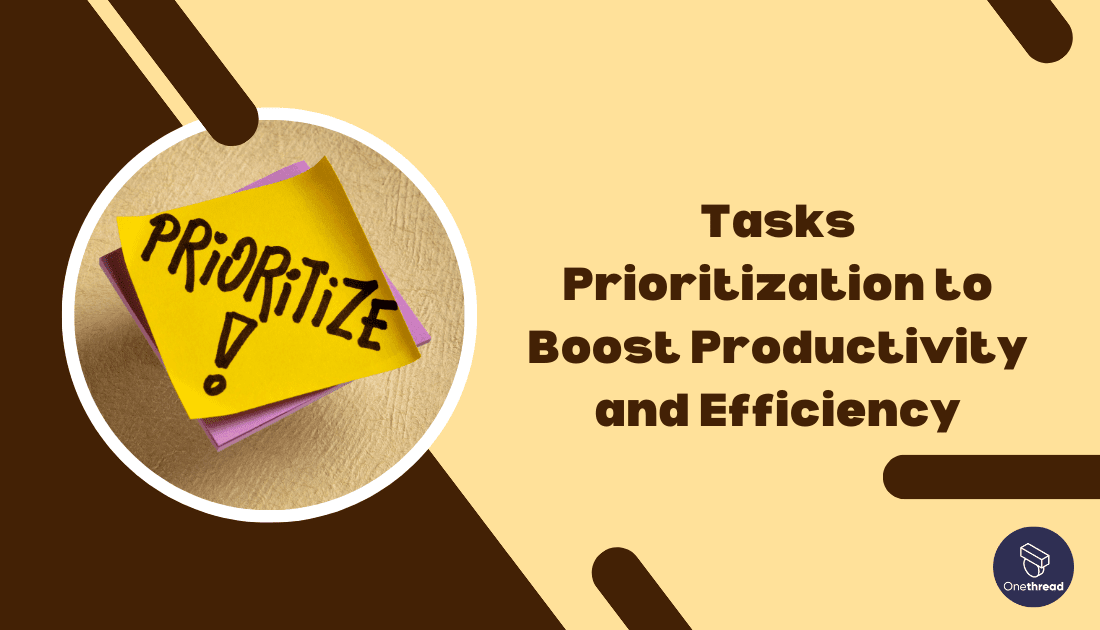Hey there, productivity champs and task jugglers! In today’s lightning-paced work arena, nailing task prioritization is your turbo boost. Think of it as your toolkit for streamlined success – trimming the excess and honing in on what truly matters.
Facing a tidal wave of tasks and deadlines? No sweat! We’ve got battle-tested strategies to keep you sailing smoothly. It’s like having a GPS for productivity, guiding you through the maze of tasks.
Consider this article your personal task prioritization compass. We’re dishing out practical techniques that’ll turn you into a task-wrangling pro.
Imagine confidently navigating your to-do list, effortlessly separating the game-changers from the distractions. With our tips, you’ll be a task-prioritizing maestro, inching closer to your goals with every move.
So, ready to supercharge your productivity? Let’s dive in and master the art of task prioritization, one streamlined step at a time!
Understanding Task Prioritization
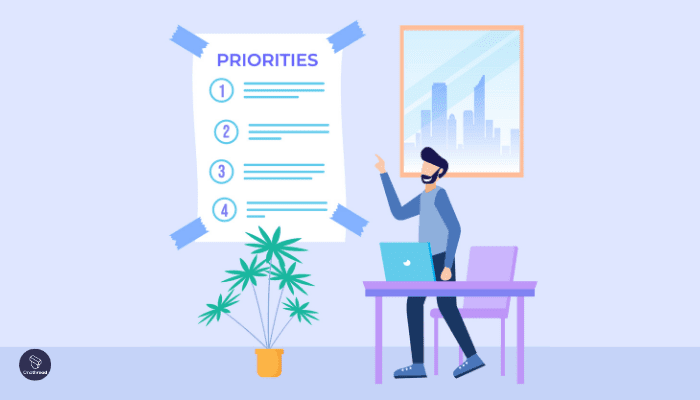
Before diving into the specific steps and methods, let’s first define task prioritization and explore its significance. Task prioritization involves organizing and ranking your tasks based on their relative importance and urgency.
It allows you to allocate your time and resources effectively, ensuring that you focus on tasks that significantly impact your goals and objectives.
Poor task prioritization can have detrimental effects on your productivity. It can lead to missed deadlines, increased stress levels, and a decrease in overall work quality. On the other hand, effective task prioritization helps you stay organized, meet deadlines, and accomplish important tasks efficiently.
The psychology behind effective task prioritization is rooted in the concept of cognitive load. When too many tasks are competing for our attention, our cognitive resources become strained, resulting in decreased focus and productivity. We can alleviate this cognitive load and work more effectively by prioritizing tasks.
Steps to Prioritize Tasks at Work
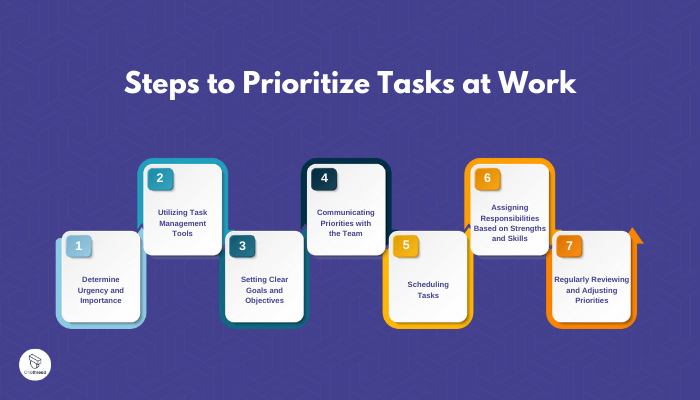



#1. Determine Urgency and Importance
The first step in prioritizing tasks is to assess their urgency and importance. Urgency refers to how soon a task needs to be completed, while importance relates to the impact and significance of the task on your overall goals. Consider using the following approach:
- Assessing task urgency: Evaluate each task’s deadlines and time constraints. Identify tasks with imminent deadlines or time-sensitive ones requiring immediate attention.
- Evaluating task importance: Consider the potential impact of each task on your goals, projects, or team objectives. Focus on tasks that align with your long-term priorities and have a substantial influence on your desired outcomes.
#2. Utilizing Task Management Tools
Task management tools can greatly assist in prioritizing and organizing your tasks. One such tool that provides comprehensive features is Onethread. With Onethread, you can centralize your tasks, collaborate with your team, and streamline your workflow. Here’s how Onethread can help you prioritize tasks effectively:
1. Overview of task management tools:
Explore the functionalities of task management tools, including task tracking, deadline management, and progress monitoring. These tools offer a holistic view of your tasks, allowing you to prioritize and manage them efficiently.
2. Using Onethread for task prioritization:
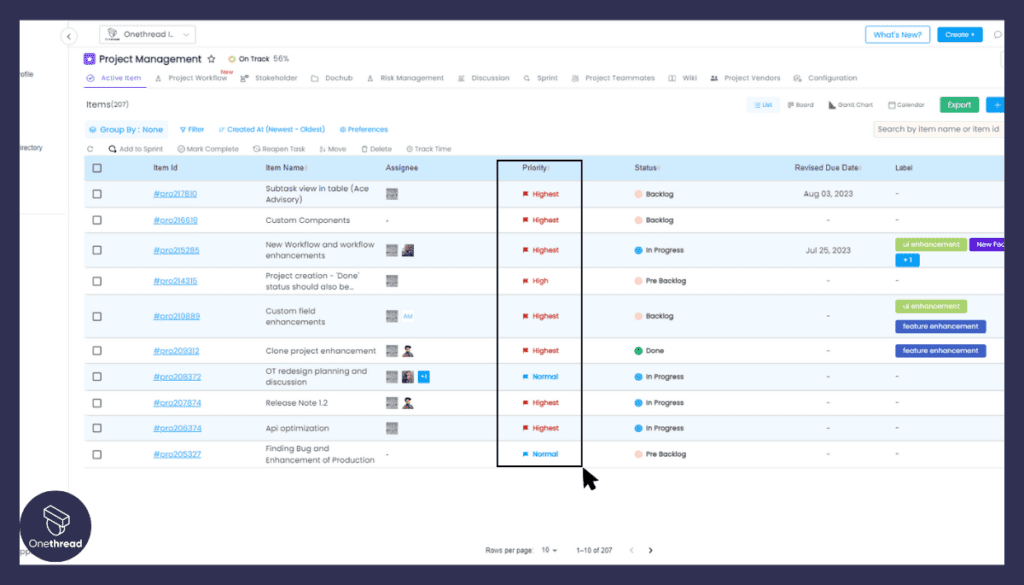



Leverage the features of Onethread to categorize and prioritize your tasks. Utilize labels, tags, or color-coding to differentiate between urgent and important tasks. With Onethread, you can easily visualize your workload and ensure that you allocate your time and resources appropriately.
#3. Setting Clear Goals and Objectives
Clear goals and objectives provide a framework for task prioritization. When you clearly understand what you want to achieve, it becomes easier to identify tasks that contribute directly to those goals. Follow these steps to set clear goals and objectives:
1. Establishing SMART goals:
SMART goals are Specific, Measurable, Achievable, Relevant, and Time-bound. Define your goals using these criteria, ensuring they are well-defined, trackable, and aligned with your overarching objectives.
2. Defining objectives for effective prioritization:
Break down your goals into smaller, actionable objectives. These objectives serve as milestones along your journey and help you determine which tasks are most critical for achieving your goals.
#4. Communicating Priorities with the Team
In a collaborative work environment, effective communication of priorities is essential. When team members understand the relative importance of tasks, they can align their efforts accordingly. Consider the following strategies for communicating priorities with your team:
1. Importance of team collaboration in prioritization: Emphasize the value of teamwork and how effective task prioritization benefits the entire team. Encourage open communication and create a supportive environment where team members can discuss priorities and seek clarification when needed.
2. Strategies for effective communication of priorities: Use clear and concise language to convey the importance and urgency of tasks. Consider using project management software like Onethread to assign tasks, set deadlines, and communicate priorities seamlessly. This ensures that everyone is on the same page and can prioritize their work accordingly.
#5. Scheduling Tasks
Task scheduling plays a vital role in task prioritization. By allocating specific time slots for tasks, you can ensure that important and time-sensitive tasks receive the attention they deserve. Follow these techniques for effective task scheduling:
1. Benefits of task scheduling:
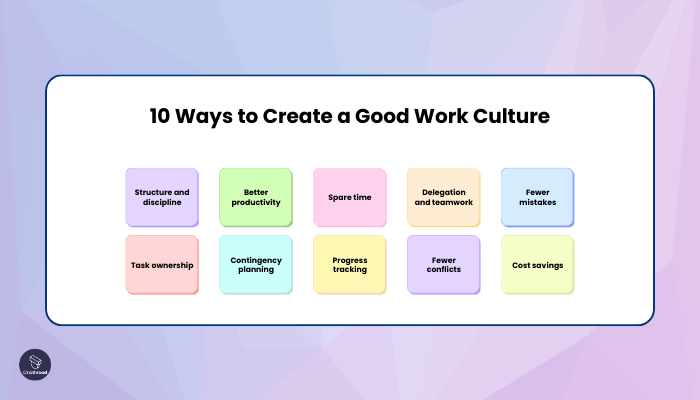



Scheduling tasks helps create structure and ensures that you allocate dedicated time for each task. It prevents tasks from slipping through the cracks and visually represents your workload.
2. Techniques for effective task scheduling:
Use time-blocking techniques to allocate specific time slots for tasks based on their urgency and importance. Consider your energy levels and work preferences when scheduling tasks to maximize productivity.
Tools like Onethread provide built-in scheduling features that allow you to assign time slots directly within the task management system.
#6. Assigning Responsibilities Based on Strengths and Skills
Effective task prioritization involves delegating tasks based on the strengths and skills of team members. By assigning tasks to individuals who are best suited for them, you optimize productivity and ensure efficient task execution. Consider the following steps when assigning responsibilities:
1. Understanding team members’ strengths and skills:
Take time to assess the strengths and skills of each team member. Consider their expertise, experience, and areas of interest. This understanding will allow you to allocate tasks that align with their capabilities and promote their professional growth.
2. Delegating tasks for optimized productivity:
Match tasks to team members based on their strengths and skills. Consider their workload and availability to avoid overwhelming individuals with excessive tasks. You foster a collaborative environment and enhance overall productivity by delegating tasks effectively.
#7. Regularly Reviewing and Adjusting Priorities
Task prioritization is not a one-time activity but a continuous process. Priorities may change, deadlines may shift, and new tasks may arise. Regularly reviewing and adjusting priorities is crucial for staying on track and adapting to evolving circumstances. Consider the following tips for reviewing and adjusting priorities:
1. The importance of ongoing assessment and adjustment:
Set aside dedicated time at regular intervals to review your task list and assess the progress of ongoing tasks. This allows you to identify tasks that may require reprioritization based on changes in deadlines, project requirements, or external factors.
2. Tips for reviewing and adapting priorities:
Consider using task management software like Onethread to visualize and reorganize your tasks easily. Regularly communicate with your team to ensure everyone is aware of any changes in priorities. Be flexible and open to adjusting your task list based on new information or shifting circumstances.
Practical Methods for Task Prioritization
While the steps discussed above provide a framework for task prioritization, several practical methods and techniques can further enhance your prioritization skills. Let’s explore some widely-used methods and how you can incorporate them into your workflow:
[HERE WE CAN USE IMAGES LIKE THIS SITE:https://blog.rescuetime.com/how-to-prioritize/]
#1. Capturing Tasks on a Master List
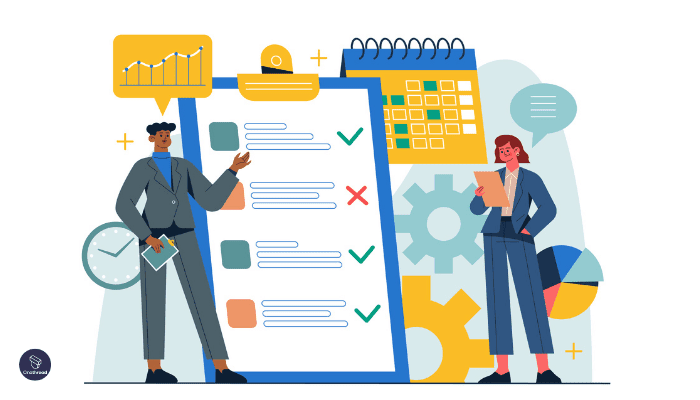



Organizing tasks on a master list is a fundamental step in effective task prioritization. A master list allows you to consolidate tasks and gain a comprehensive overview of your workload. Here’s how you can create and maintain an effective master list:
1. Organizing tasks by monthly, weekly, and daily goals: Break down your tasks and categorize them based on different time frames. This helps you focus on the most immediate and pressing tasks while keeping track of long-term objectives.
2. Strategies for maintaining an effective master list:
Regularly update your master list to reflect changes in deadlines or task priorities. Prioritize the tasks on your master list based on urgency and importance. Consider using task management tools like Onethread to centralize and manage your master list efficiently.
3. How Onthread can help:
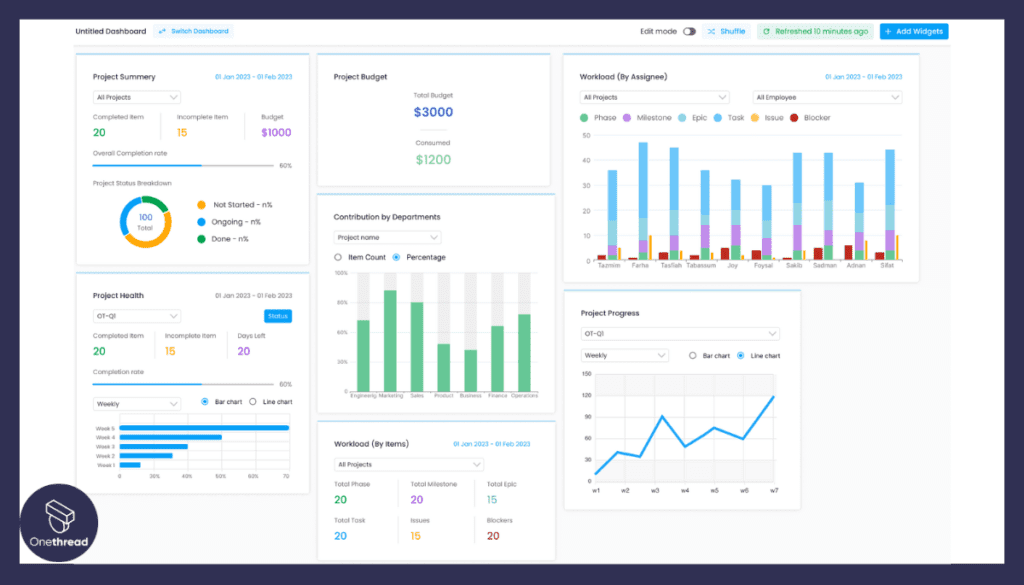



Onethread simplifies the process of capturing tasks on a central dashboard by providing a centralized platform for task management. With its user-friendly interface, you can effortlessly add tasks, ideas, or notes and get visibility through the dashboard. Onethread’s intuitive design ensures that no task is forgotten or lost, allowing you to maintain a comprehensive and organized task repository for easy reference and execution.
#2. Differentiating Urgent from Important Tasks with the Eisenhower Matrix
You can use the Eisenhower Matrix to prioritize tasks based on their relative urgency and importance. Here’s how:
1. Overview of the Eisenhower Matrix:
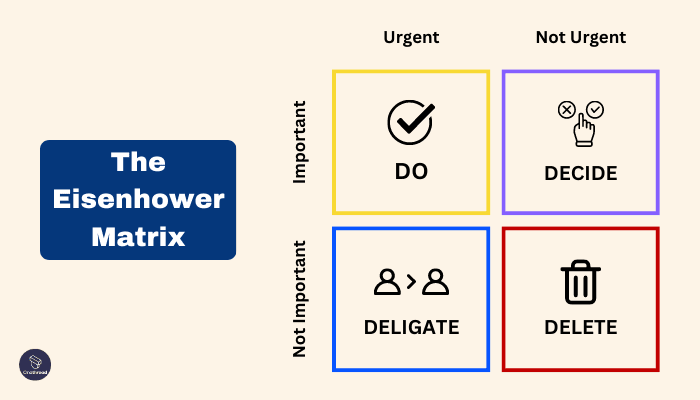



The Eisenhower Matrix divides tasks into four quadrants: Urgent and Important, Important but Not Urgent, Urgent but Not Important, and Not Urgent and Not Important.
2. Applying the matrix to prioritize tasks:
Start by identifying tasks that fall into the Urgent and Important quadrants. These tasks require immediate attention. Next, focus on tasks in the Important but Not Urgent quadrant, as they contribute to long-term goals. Delegate or eliminate tasks in the Urgent but Not Important quadrant whenever possible.
Finally, minimize or eliminate tasks in the Not Urgent and Not Important quadrants to optimize your productivity.
#3. Ranking Tasks by True Priority with the Ivy Lee Method
The Ivy Lee Method is a simple yet effective technique for ranking tasks based on their true priority. It helps you maintain focus and complete tasks in order of their importance. Follow these steps to implement the Ivy Lee Method:
1. Understanding the Ivy Lee Method:
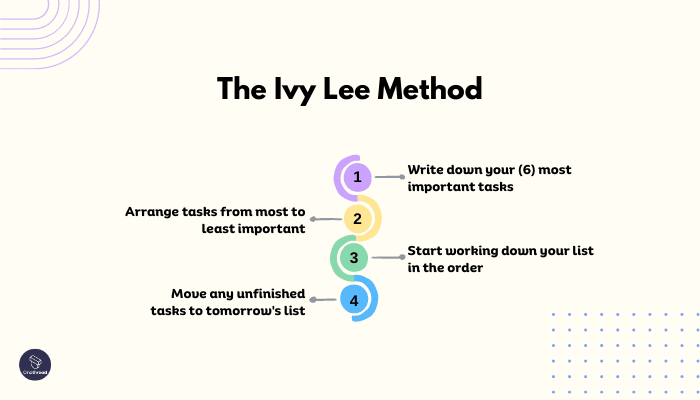



The Ivy Lee Method involves selecting a maximum of six tasks and ranking them in order of importance. Start by identifying the most critical task and assign it the highest priority. Continue the process until you have ranked all six tasks.
2. Implementing the method for effective prioritization:
Begin your workday by focusing on the task with the highest priority. Dedicate your time and energy to completing that task before moving on to the next. Repeat this process for the remaining tasks on your list. At the end of the day, assess your progress and carry over any unfinished tasks to the next day.
#4. Separating Tasks with Similar Priorities using the ABCDE Method
The ABCDE method allows you to prioritize tasks with similar importance levels further. You can differentiate their priority within the same category by assigning letters to tasks. Here’s how you can apply the ABCDE method:
1. Overview of the ABCDE method:
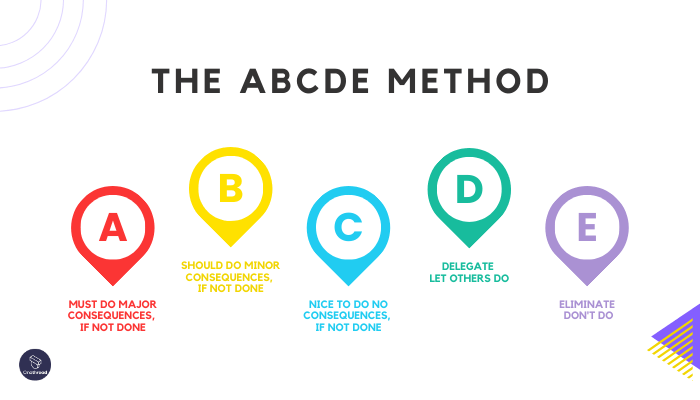



Assign each task a letter from A to E, where A represents the highest priority, and E represents the lowest. Tasks with the same letter should have similar levels of importance.
2. Applying the method to categorize and prioritize tasks:
Start by assigning the letter A to tasks that require immediate attention. These tasks should have severe consequences if not completed promptly. Assign letters B, C, D, and E to tasks with decreasing levels of urgency and importance. Within each category, prioritize tasks based on their relative importance.
#5. Starting the Day with the Most Important Task (Eating the Frog)
Brian Tracy popularized the concept of eating the frog as a way to set a productive tone for the rest of the day by tackling your most important and challenging task first thing in the morning. Here’s how you can implement this strategy
1. Explanation of the “Eat the frog” concept:
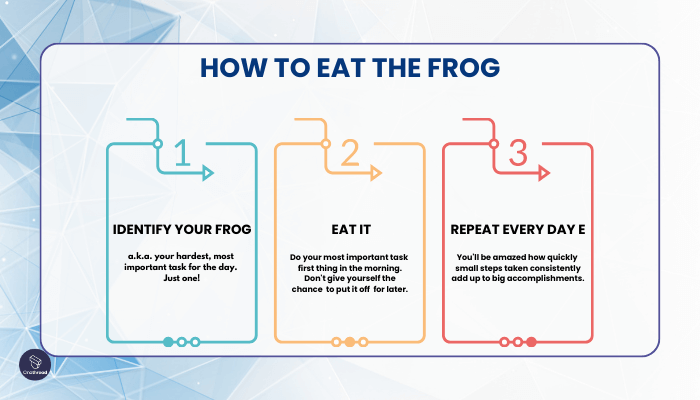



The phrase “eat the frog” implies that you have accomplished the most difficult part of your workload by completing the most challenging task early in the day. This boosts your confidence and motivation for the rest of the day.
2. Benefits of tackling important tasks first:
By addressing the most important task early, you avoid procrastination and reduce the risk of running out of time or energy later in the day. Completing a challenging task also provides a sense of achievement and sets a positive momentum for the remaining tasks.
#6. Warren Buffett’s 2-List Strategy for Clear Goals
Warren Buffett’s 2-list strategy helps you establish clear goals and focus your efforts on the most critical tasks. It encourages you to identify your top priorities and eliminate distractions. Here’s how you can incorporate this strategy into your task prioritization process:
1. Overview of Warren Buffett’s approach:
Warren Buffett recommends making a list of your top 25 goals and then narrowing it down to your top 5. The remaining 20 goals become your “avoid at all costs” list. This strategy ensures that you focus on your most important goals and eliminate non-essential tasks.
2. Incorporating the 2-list strategy into task prioritization:
Start by listing all your goals and tasks. Review the list and identify the top 5 tasks aligning with your objectives. Consider the remaining tasks as potential distractions and allocate your time and resources to the top 5 tasks.
#7. Avoiding the Sunk Cost Fallacy
The sunk cost fallacy refers to the tendency to cling to tasks or projects based on the time or effort already invested, even if they no longer align with your priorities. Avoiding this fallacy is crucial for effective task prioritization. Consider the following strategies:
1. Understanding the sunk cost fallacy in prioritization:




Recognize that the time and effort already invested in a task should not dictate its priority. Instead, focus on the potential benefits and alignment with your goals when determining the priority of a task.
2. Strategies for being flexible and adapting priorities:
Regularly reassess the relevance and impact of ongoing tasks. If a task no longer contributes significantly to your goals, be willing to deprioritize or eliminate it. Redirect your efforts towards tasks that have a higher impact or better align with your current objectives.
#8. Leveraging Time Multipliers for Enhanced Productivity
Time multipliers refer to techniques or strategies that help you make the most of your available time. By leveraging these time-saving methods, you can enhance your productivity and free up time for high-priority tasks. Explore the following time multipliers:
1. Exploring time multiplier techniques:
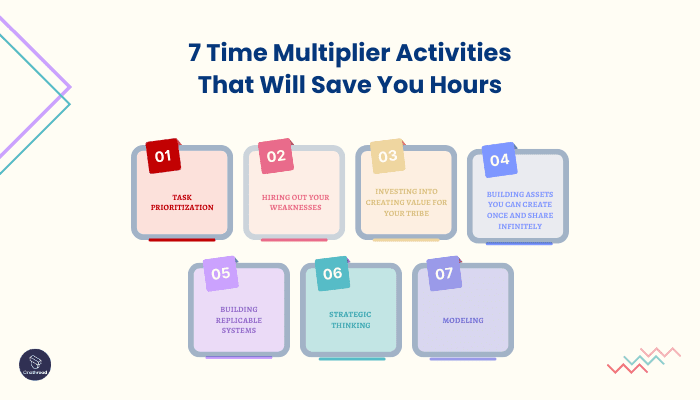



Time multipliers include delegation, automation, and batching similar tasks. Delegation involves assigning tasks to others, automation refers to using technology to streamline repetitive tasks, and task batching involves grouping similar tasks together to improve efficiency.
2. Maximizing productivity through time management:
Identify the tasks that can be delegated or automated to reduce your workload. Group similar tasks together and allocate specific time blocks for focused work. By implementing time multipliers effectively, you can optimize your productivity and allocate more time to priority tasks.
3. How Onethread can be effective: With Onethread, delegation, automation and batching tasks are easier than ever. You can assign a task to another team member while creating the task on Onethread. Onethread allows you to automate some of your repetitive tasks and makes work a little less tiresome.
#9. Optimizing Productive Hours for Important Work
Each individual has specific hours of the day when they are most productive and focused. Optimizing your productive hours involves identifying and allocating these peak periods to high-priority tasks. Consider the following steps:
1. Identifying personal productive hours:
Reflect on your work patterns and identify the times of day when you feel most energized and focused. Depending on your circadian rhythm and personal preferences, this could be in the morning, afternoon, or evening.
2. Aligning priority tasks with peak productivity times:
Once you have identified your productive hours, allocate them to important tasks where focused attention or creative thinking is required. Reserve less demanding or routine tasks for periods when your energy levels naturally dip. You can maximize your output and work more efficiently by aligning priority tasks with your peak productivity times.
Dealing with Overwhelming Workloads
Managing overwhelming workloads is a common challenge when it comes to task prioritization. When faced with numerous tasks and tight deadlines, it’s essential to employ strategies to avoid burnout and stay productive. Consider the following strategies:
1. Strategies for managing overwhelming tasks:
Break down complex tasks into smaller, manageable subtasks. Prioritize tasks based on urgency and importance, focusing on high-impact activities.
Consider delegating tasks to team members, leveraging automation, or outsourcing to reduce your workload. Practice self-care techniques such as mindfulness or time management strategies to maintain a healthy work-life balance.
2. Avoiding burnout through effective prioritization:
Recognize the signs of burnout, such as exhaustion, decreased motivation, or decreased work quality. Regularly review your workload, reprioritize tasks if necessary, and ensure you take breaks and practice self-care to prevent burnout.
Conclusion
Prioritizing tasks is essential for maximizing productivity and achieving your goals at work. You can develop effective task prioritization skills by following the steps and implementing the methods and techniques discussed in this article.
Remember to regularly review and adjust your priorities, leverage task management tools like Onethread, and communicate effectively with your team.
By optimizing your task prioritization, you’ll be able to work more efficiently, reduce stress, and confidently accomplish your objectives. Start implementing these strategies today and experience the positive impact of effective task prioritization.
Prioritization FAQs
Addressing common questions related to task prioritization can provide clarity and guidance to individuals seeking to improve their prioritization skills. Here are answers to some frequently asked questions:
How to prioritize tasks effectively?
Effective task prioritization involves:
- Assessing urgency and importance.
- Leveraging prioritization methods.
- Utilizing task management tools.
- Regularly reviewing and adjusting priorities based on changing circumstances.
How to plan and prioritize your workload?
Plan and prioritize your workload by setting clear goals and objectives, breaking them down into actionable tasks, ranking tasks based on urgency and importance, using prioritization methods like the Eisenhower Matrix or ABCDE method, scheduling tasks, and leveraging task management tools.
How to create a priority list?
To create a priority list, assess the urgency and importance of tasks, assign them priority letters or rankings, and organize them in a list or matrix based on their priority level. Regularly review and adjust the priority list as needed.
What is the most important step in prioritizing?
The most important step in prioritizing tasks is to determine the urgency and importance of each task. This step lays the foundation for effective task prioritization and guides subsequent decisions.
What is the role of project management software in managing work priorities?
Project management software, like Onethread, plays a crucial role in managing work priorities. It helps centralize tasks, facilitates team collaboration, provides task tracking and progress monitoring, and offers features for effectively scheduling, prioritizing, and communicating priorities.
